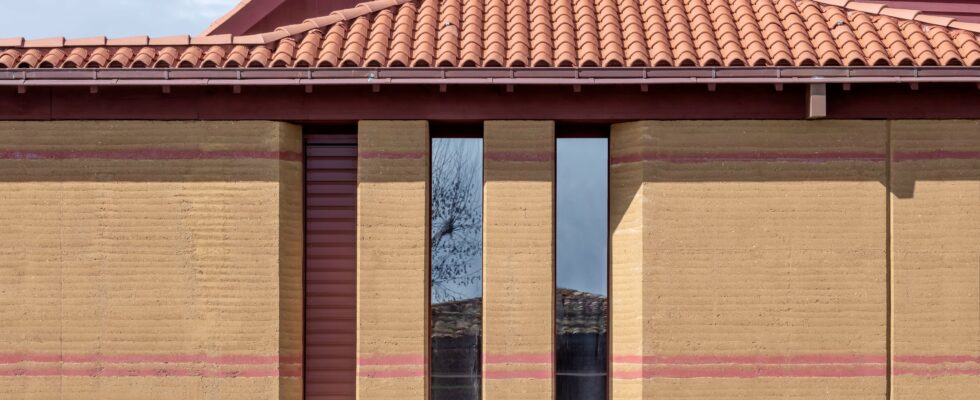Despite the tremendous momentum organic farming, the wine industry is suffering. Six million hectolitres were distilled last year and a hundred thousand hectares are going to be uprooted, or nearly 15% of the total surface area. The fault lies in the lack of love that is affecting the blood of the vine in France: minus 70% in sixty years – the reds are struggling more than the others. To ward off the inexorable trend, initiatives are multiplying. Like, to regain the favor of female palates and millennials, reducing the alcohol content, breaking the codes of consumption, relaunching the production of white. Or even inventing new cellars. Enough to bring color back to our viticulture?
One of the most remarkable castles in Bordeaux with its spectacular Scottish architecture in the Médoc, Cantenac Brown continues to stand out on the left bank. But with a humble construction, in raw wood and raw earth, the opposite of the exuberant manor.
Three red lines, the colour of wine, run slightly trembling along the café au lait rammed earth wall: the clay millefeuille bears the marks – horizontal bands – of this ancestral construction technique, consisting of stacking layers of compacted earth. The 350 square metre work, carried out by craftsmen from Toulouse, is a feat and a challenge to other trades – to install the windows, the framework, etc. The modest-looking wall is in reality 1 metre thick with its layer of cork insulation and its interior covering in raw earth as well, but in the form of bricks.
A “zero carbon” temple
In April 2024, the Le Lous family inaugurated this “zero carbon” temple built to honor “a product that owes everything to nature”. The three-year project “pushed the limits of eco-responsibility”, believes the owner, Tristan Le Lous, who had entrusted the project to a master of the genre, the architect Philippe Madec. Not a gram of cement – just a minimum of carbon-free concrete for the foundations, Canadian wells to limit energy consumption, biosourced materials (wood and earth) in New Aquitaine, or recyclable (glass and steel), or even recycled since the building reuses part of the walls of a former seminar center. Cantenac Brown has 5,000 square meters of new facilities without having artificialized an inch of its wooded park.
But the frugality of the place is matched only by the ambition to make great wines in a depolluted environment, combining the thermal and hygrometric qualities of wood and earth in the aging cellar (without air conditioning), and the precision of a vat room redesigned for plot-by-plot and gravity-fed vinifications.
Yin and Yang
The two spaces of the new building respond to each other like yin and yang: light and modernity in the technical part, lit by huge bay windows and the brilliance of 70 truncated conical tanks powered by elevator; meditation and darkness in the barrel room, under a sumptuous solid wood vault in the shape of an overturned boat hull, a veritable cathedral of silence resting on fine metal compasses. The 2023 vintage, embarked on its still journey, marks year zero of a new era at Cantenac Brown. A new world for José Sanfins, the “captain” of the estate, who joined as a “mousse” (intern) thirty years ago. A bold horizon for Margaux’s third growth.
Grand-Puy Ducasse, the suspended urban winery
The only château to vinify its wines in the city centre of Pauillac, and this for two hundred years, Grand-Puy Ducasse has not had the leisure to dig or build high up to modernise its facilities – work that has become essential to highlight its mosaic of plots. Ten years of reflection were necessary to write a high-tech architecture “suspended” on 218 micropiles, slipped into the skin of the old château. The creation of an upside-down vat room (48 inverted cones, hung from the ceiling) has freed up space to develop a tourist trail. There are not only vats fixed under the roof of the fifth grand cru classé: around thirty swallows’ nests were found in their place at the end of the work to welcome their tenants when they return from migration.
